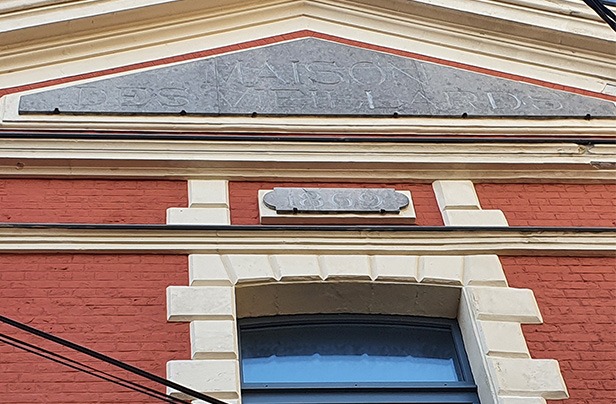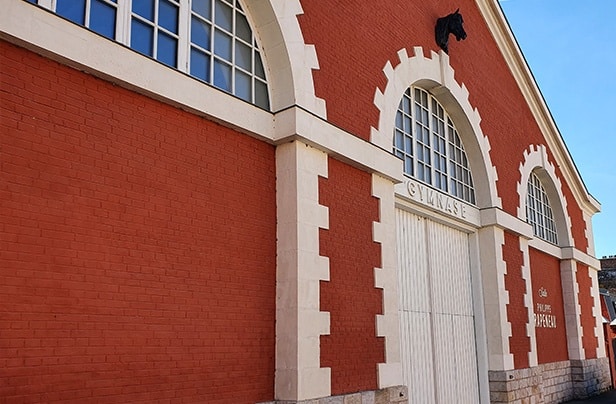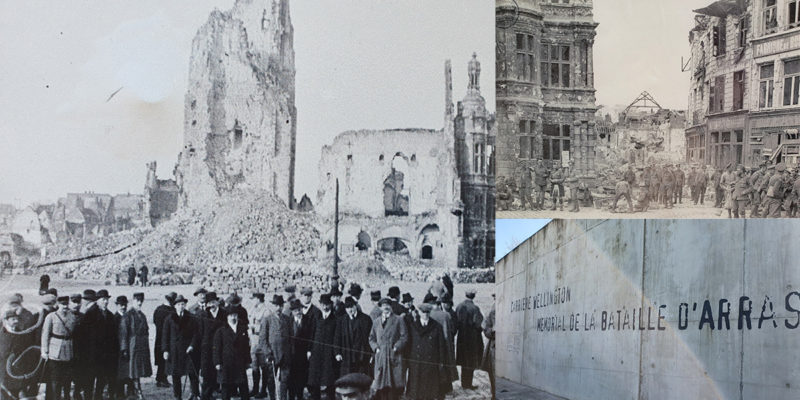After the Belle Époque, a period during which the town of Arras experienced political rather than economic upheavals, the World War broke out in August 1914 and set the whole of Arras in motion. On the northern front, the town was already strategic in the face of the German invasion and, like other martyred towns such as Reims, suffered extensive shell damage. Many of the town’s monuments, as well as its old houses, were destroyed by the deluge of fire, including the Belfry. In this issue, we take a closer look at the events that threw the Artois town into the Great War of 14-18.
Complicated beginnings during the Great War
As we saw earlier, Arras was essentially a garrison town (33rd Infantry Regiment in particular) , giving way to other towns such as Lille. Following the mobilization order in August, a large number of soldiers arrived in the town, including 20,000 reservists. First of all, as with all French troops, Lieutenant-Colonel Stirn, who replaced Pétain, sent the soldiers “en chanson” to the front. At the time, Charles De Gaulle was a lieutenant in Arras. At Dinant, the 33rd RI was heavily defeated. Passing through Hirson, the troops of the 33rd then marched 70 kilometers to camp at Maubert-Fontaine and Bourg-Fidèle in the Ardennes. A company of German uhlans awaits them on August 14.
The war really begins in the North. De Gaulle is wounded in the leg for the first time in the Great War. Brussels falls to the Germans.
Arras also falls, and German troops are in the city from September 6 to 8, 1914. However, they left the town to join the front towards Amiens, and it was not until September 18 that allied Arab goumiers arrived in the town. The first large numbers of wounded flocked to the Bénédictines on rue d’Amiens, but also to the nearby ENG (École Normale des Garçons, now the headquarters of the Départemental), in the old people’s home that would later become the new home of the Arras Conservatoire.

Crossroads
between Paris and the industries of the north, Arras became a major stake for the belligerents. Similarly, the hills of Notre-Dame de Lorette and Vimy underwent heavy fighting, leading to the construction of trenches. By October 1914, the Germans had taken Lens, Vimy, Souchez, Wancourt, Monchy-le-Preux, Bailleul-Sire-Berthoult, Souchez, La Targette, Saint-Laurent-Blangy, Neuville-Saint-Vaast, Agny and Tilloy-lès-Mofflaines. It was General Foch who called for resistance. On an interim basis, Boulogne became the capital of Pas-de-Calais. In June 1915, the offensive on Vimy and Lorette is remembered for its deadly impact. In Arras, the city was destroyed (cathedral, Saint-Vaast palace, Méaulens portal, Saint-Jean-Baptiste church where you’ll find a plaque commemorating the heroism of Wacquez (a soldier) and Glasson (a fireman) fighting the flames. Arras was perceived as a martyred city, and although Joseph Joffre came here in 1916, it was above all the President of the Republic, Raymond Poincaré, who visited in January 1915. Subsequently, it was first Verdun and then Reims that came to the fore, in view of the fierce fighting (the Somme offensives). However, from 1916 onwards, British troops came to help the French.
The war continued in Arras, and in April 1917, the Battle of Artois became a highlight of the Great War.

Gymnase Du Manège À Chevaux (Caserne Schramm)
The Battle of Artois from April 1917 onwards
To relieve the efforts being made in Champagne, the British high command decided to launch an offensive towards Douai and Cambrai from Arras. Everything had been prepared in the city’s underground passages (the boves and quarries) running from the Saint-Sauveur and Ronville suburbs to the Grand’Place and Place des Héros. Many New Zealanders were present, sometimes dancing the haka. At Vimy, on April 9, 1917, Canadians broke through enemy lines and attacked Vimy Ridge. The front line was moved to Gavrelle and Fontaine-les-Croisilles. Vimy and Monchy were recaptured, taking many German prisoners and killing many more. A German counter-offensive begins on November 20, 1917. Clemenceau visits Arras in February 1918. Kings George V of England and Albert 1st of Belgium also visited Arras on February 25, 1918. Records of their meeting can be found today at the Canadian Vimy Memorial. Less than a month later (on March 21), the Germans broke through the British front on the Somme ; Arras civilians were evacuated, including the mayor at the time, Louis Émile Rohart-Courtin, who was made a Chevalier de la Légion d’Honneur in 1916, refusing to leave the town in the face of the second German offensive. British resistance saved Arras from disaster and defeat, and Foch launched a successful counter-offensive. The reinforced military convoys of the day augured an armistice that was to take place on November 11, 2018.
Further information
A visit to the Wellington quarry in the south of the town will give you a complete overview of the situation during the Great War. There are also regular exhibitions highlighting events such as the Battle of Arras in 1917. You’ll find many photos, including the ones you see here (some taken in the streets of Arras). You can also visit theTourist Office, located inside the town’s Belfry, to follow a memorial trail. The corridors on the first floor are dotted with stories of the heroes of the era. The Lorette and Canadian Vimy Memorial museums are a must-see to understand the horror of the trenches and the Artois battles. The 33 RI Guerre 14-18 site is a brilliant evocation of the history of the French and Artois infantry.
X.D.
